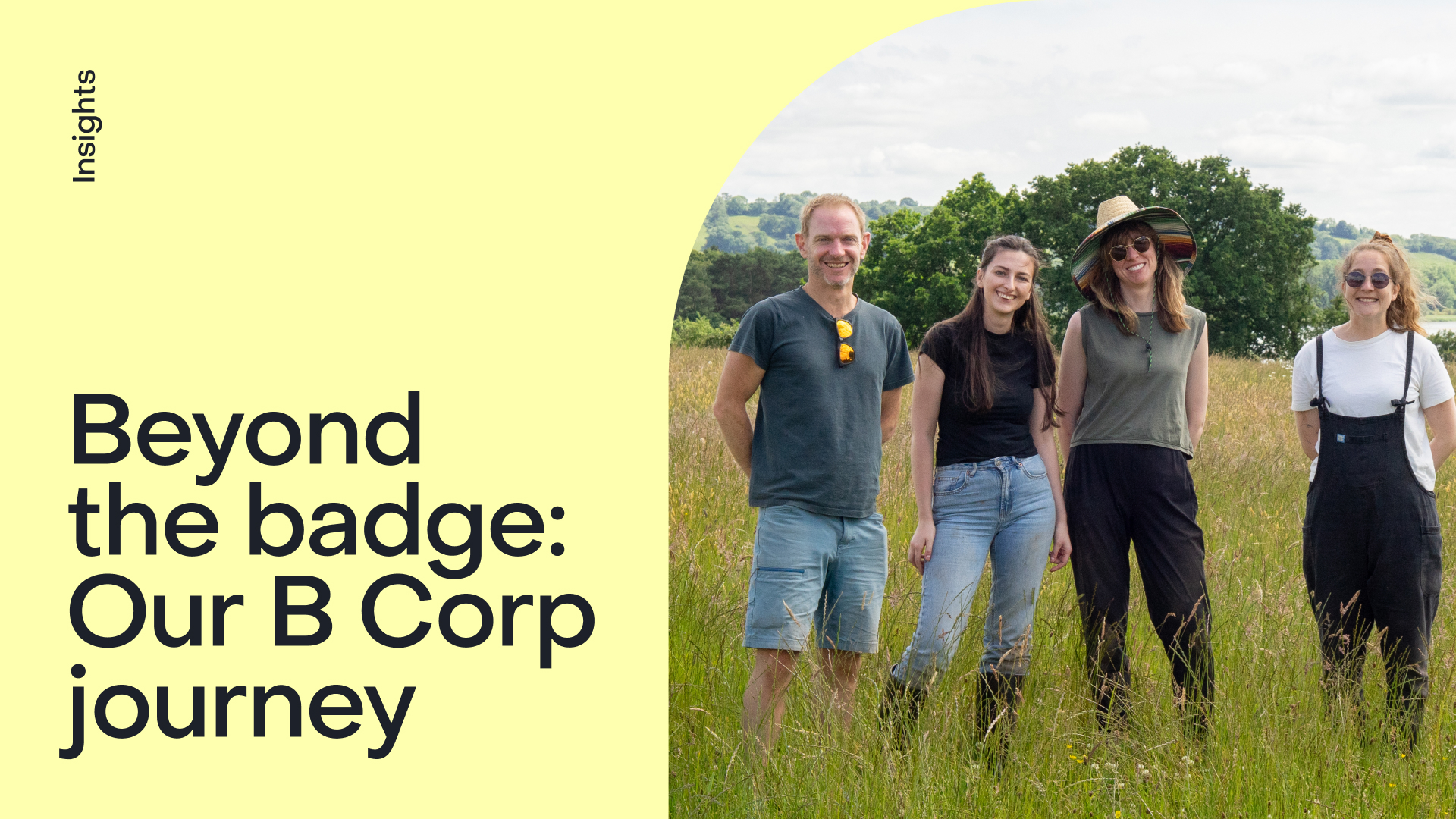At the root of Blue Carbon
We explore the multifaceted benefits of Seagrasses, the challenges these underwater flowering plants face, and why there is still hope in securing this crucial ecosystem service for generations to come.

Evie Grove

Seagrasses are the unsung heroes of our oceans, quietly sequestering carbon and protecting our wellbeing in wondrous ways you may not have imagined.
This ocean superpower tirelessly takes action to preserve and promote perilously interdependent ecosystems as well as an incredible amount of biodiversity – playing a critical role in maintaining a healthy, happy ocean for everyone.
In this blog we explore how Seagrasses are a vital Nature-based Solution with multifaceted benefits; the challenges these underwater flowering plants face; and why there is still hope in securing this crucial ecosystem service for generations to come.
Super Organic Carbon Stores
It’s no secret that seagrasses are a superpower when it comes to combatting climate change. In fact, its meadows are highly efficient at it – sequestering as much as 19.9 billion tons globally. Seagrasses are also able to store organic carbon 35 times more efficiently than any terrestrial forest – including the rainforests of this world.

This is all because seagrasses are the only flowering plants able to live in seawater and can action photosynthesis –using the carbon to grow and produce biomass. A significant portion of this carbon is stored in the form of organic matter in the sediments below the seagrass meadows.
This carbon storage can also persist for centuries – as seagrasses don’t experience the same stressors that on-land plants do i.e., forest fires and deforestation. This makes seagrass ecosystems vital contributors to the global carbon cycle by helping to offset our carbon emissions.
However, it must be noted that commercial vessels and their subsequent practices i.e., trawling, bottom-dragging, and mooring, can have a detrimental effect on the seagrasses capacity to waylay carbon emissions.
Such activities can physically damage the seafloor, uprooting seagrass meadows and ultimately releasing stored carbon back into our atmosphere at an astonishing rate of 0.65 gigatonnes per year, globally.
Protecting Us And Our Shoreline
Seagrass meadows also act as natural barriers against coastal erosion caused by the effects of climate change. Their root systems consist of underground rhizomes that stabilise sediment and reduce the impact of waves by up to 40%.

This is a great natural defence when protecting coastlines and adjacent habitats i.e., mangroves and salt marshes from erosion during disrupted weather patterns.
They also play a crucial role in maintaining water quality – by filtering pollutants and mitigating the effects of nutrient pollution; reduce human, animal and ecosystem exposure to bacterial pathogens by 50%; and improve overall water clarity.
This is a great natural defence when protecting coastlines and adjacent habitats i.e., mangroves and salt marshes from erosion during disrupted weather patterns
But our own pollution practices are already pushing these systems to their limits. Excessive nutrient run off i.e., nitrogen and phosphorus from agriculture and urban areas leads to excessive nutrient enrichment in coastal waters.
This promotes a surge in harmful algae, which competes with the seagrass and disrupts the permeation of light – essentially smothering seagrasses who can no longer photosynthesise successfully.
Chemical pollutants, plastic debris, and oil spills can also directly harm seagrasses and the species relying on them. As can harmful UV suppressing chemicals that are introduced to an ecosystem via recreational tourism.
Biodiversity Hotspots
It’s already becoming quite clear that seagrass meadows are essential for supporting marine life. They provide critical, clean, and protective habitats for a wide range of ‘at-risk’ marine species – including dugongs, sea turtles, sea horses, and sharks.
They are also an essential habitat for many of the fish we humans consume – including Cod and Alaska Pollock.
In fact, up to 20% of the world’s fisheries stem from the seagrass meadows we are systematically eradicating at a rate of 7% per year – putting food and income security at high risk. When you consider that seagrasses only cover 0.1% of the ocean floor, these statistics become even more alarming.

Once again, sadly we are doing little to preserve our own natural resources – as rising sea temperatures and overfishing of species within seagrass habitats are disrupting the food web, leading to an imbalance in ecosystems.
One prime example is how a change in sea temperature is disrupting the migration of sharks to seagrass meadows. Without a natural predator to consume prey animals, prey populations go unchecked. This results in overgrazing of the seagrass meadows and subsequent habitat degradation, which negatively impacts other species.
Vice versa, small fish heavily rely on seagrass meadows as breeding and nursery grounds, providing a safe environment for young to grow. Endangered predator species such as tiger sharks and giant manta rays rely on these smaller fish as a food source, which is at risk of depleting rapidly.

To put this into further context, consider that globally, 30,000km2 of seagrass has been lost in the last couple of decades (18% the global area).
If 10,000 m2 of seagrass habitat can support 80,000 fish and over a million invertebrates, every human and marine species is now facing a debilitating depletion in food resource.
Planting Hope
Conservation efforts aimed at protecting and restoring seagrass ecosystems are essential for maintaining their ecological and societal value. It’s literally in our own hands.
At Yoke, we’re working with several of the worlds leading not-for-profit organisations, dedicated to the conservation and restoration of Nature-based Solutions. Much of our own supporting efforts stem from the work we do, to help raise awareness and instigate systematic change.
But we can still do so much more and so can you.
See the links below to discover inspiring stories about the direct actions’ others are taking in supporting these significant and remarkable meadows, and how we can all get involved.
- https://www.projectseagrass.org/
- https://podbay.fm/p/for-what-its-earth/e/1652842620
- https://www.wri.org/insights/understanding-seagrass
- https://www.theguardian.com/environment/2021/nov/05/seagrass-meadows-could-turn-tide-of-climate-crisis-aoe
- https://www.wwf.org.uk/what-we-do/planting-hope-how-seagrass-can-tackle-climate-change
- https://www.wildlifetrusts.org/habitats/marine/seagrass
- https://www.researchgate.net/publication/349811882_Historical_Analysis_Exposes_Catastrophic_Seagrass_Loss_for_the_United_Kingdom
- https://www.youtube.com/watch?v=W0oua_jTm-g
- https://www.seawilding.org/volunteer
- https://www.seawilding.org/seagrassseedprocessing
- Project Seagrass Volunteers
- https://saveourseabed.co.uk/get-involved/volunteers/
- https://oceanconservationtrust.org/volunteers-needed-to-support-seagrass-conservation/


.jpg)